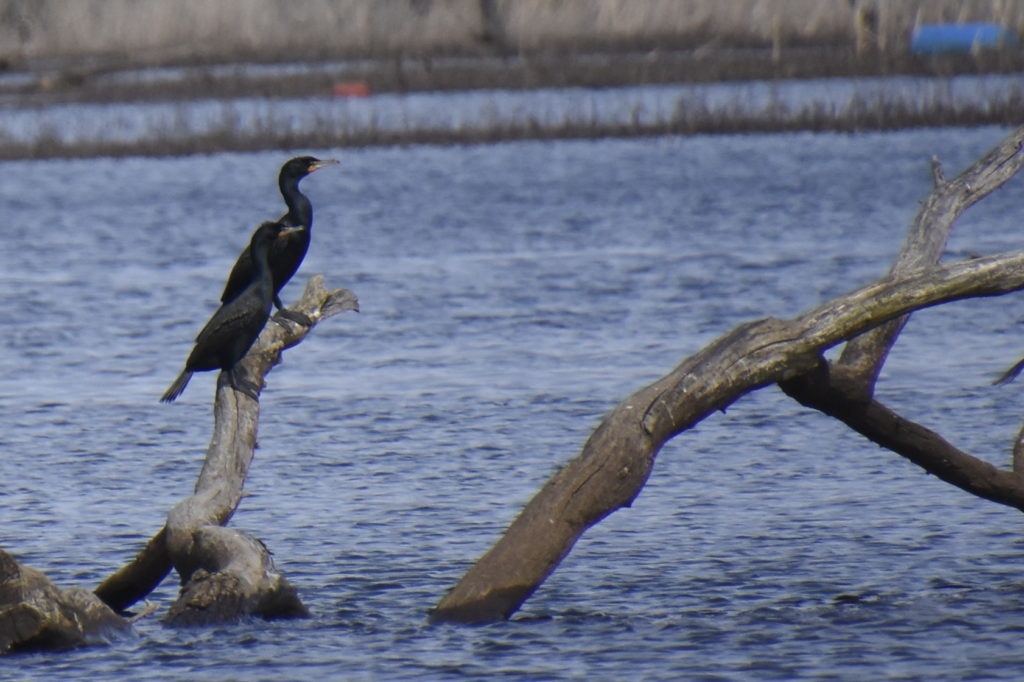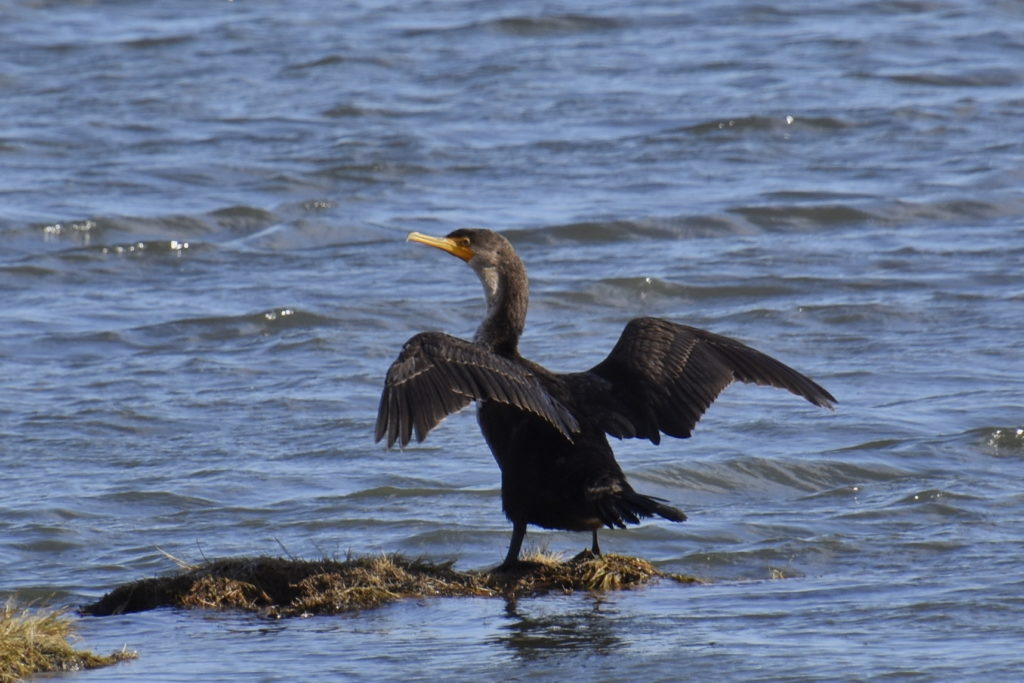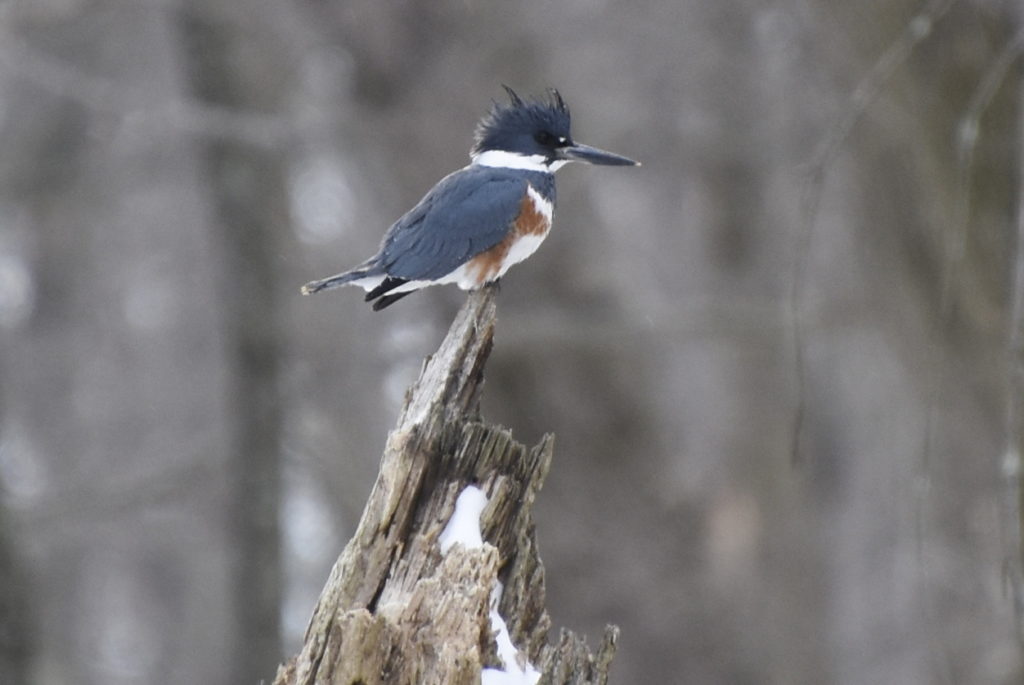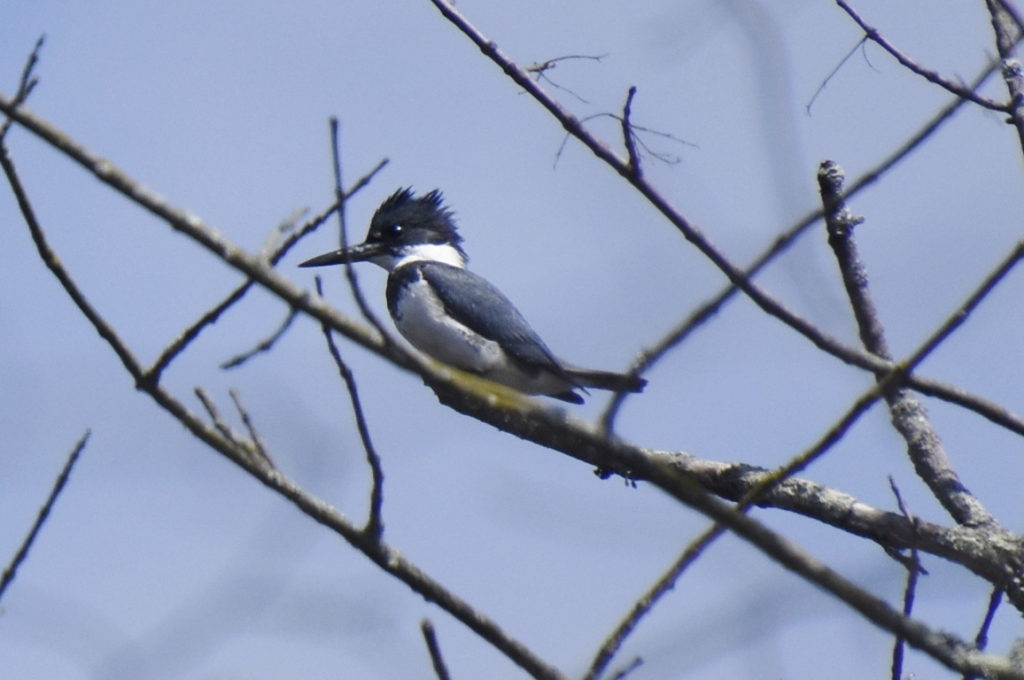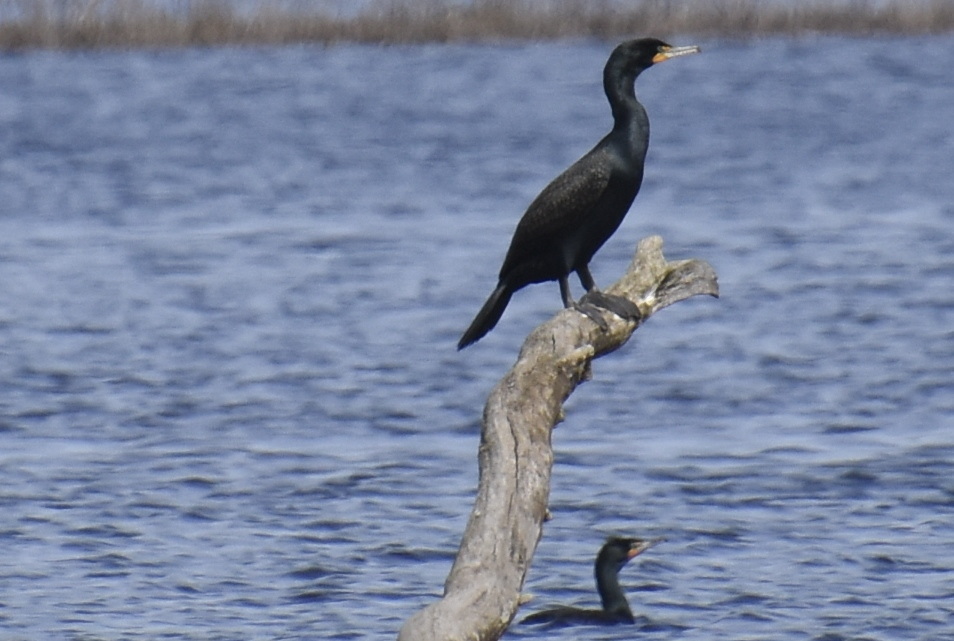Fishing for a living
There are many birds whose diet is dependent on fish. In our area in summer, the Osprey or “fish hawk” is almost exclusively a fish eater. However, we also have a couple of birds that can be seen all year long with fish diets: the Double-crested Cormorant and the Belted Kingfisher. Their diets are very adaptable to the food supply and while they favor fish will eat crustaceans and even small amphibians and mammals, if available, when the fish become scarce.
Double-crested Cormorant has the greatest geographic range of all the cormorants and the species will be found in almost any aquatic environment, from coastal bays and estuaries to inland lakes and rivers. These dark, sleek birds sit low in the water with their heads gently (but noticeably) tilted at a slight upward angle. Adults have an orange patch of bare skin on their faces and throats. The “double crest” refers to a couple of tufts on either side of the skull, but it is not easy to see in the field. These birds dive for their prey, and swim underwater with their webbed feet propelling them through the water. Their prey is brought to the surface and swallowed head first. Unlike ducks, they do not have the essential oils in their feathers to shed water so it is very common to see them perched in the sun with their wings spread out to dry. There is one other cormorant in our area, the Great Cormorant, which is a winter visitor and found almost entirely along the New Jersey shore.
Belted Kingfisher is a really neat bird, with an unkempt crest that gives it a kind of “punk rocker” look. We are more likely to hear it before we see it. It makes a distinctive loud rattle in flight or while perched near the water. Hear it once and you will never fail to make the ID. “Belted” refers to the chest bands. Interestingly, the female is the more colorful, having two bands, blue-gray and rust like orange, across its chest. The male has just one blue-gray band.
A Kingfisher often hunts from a perch above the water, but it also has the ability to hover over the surface and then fold its wings and make a swift dive to snare its meal. It is found across North America in a wide variety of water habitats.
Photographs and text by Robert Koch.


